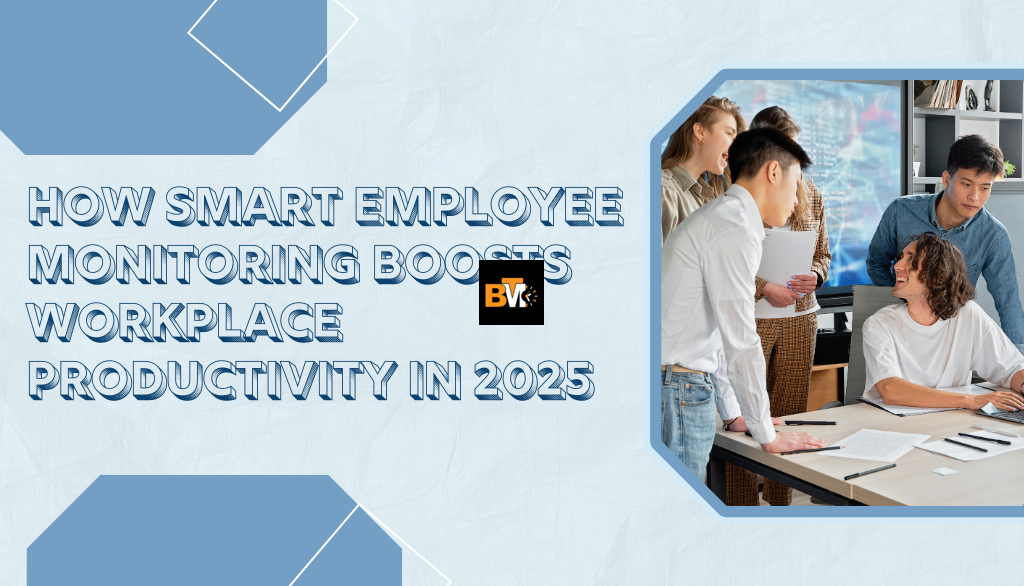In today’s fast changing business model, employees’ productivity plays a key role. Business success directly depends on overcoming several challenges – adapting to modern trends and improving staff efficiency to stay competitive. With the rise of hybrid and remote work models, traditional supervision methods are no longer effective, and companies need smarter solutions to optimize workforce performance. So, how to achieve the boost of productivity? Here is how employee monitoring software, for example from CleverControl, can be integrated into the workflow to make your employees stay focused and streamline their activities. This article will explain to you how employee monitoring software can align your business in 2025.
The Productivity Puzzle: Why Traditional Methods Are Failing
Tracking employee productivity—a key success factor—remains challenging with traditional methods alone. The main problem is closely connected to outdated resources that fail to provide real-time insights for informed decision-making.
Many companies still use monitoring software that focuses on simple metrics like hours logged and task completion, missing a deeper analysis of actual productivity. Such data often lack the specific metrics needed for an accurate productivity audit.
Equating time spent at work with productivity is a common mistake among business leaders. These notions do not reflect each other. Only comprehensive employee monitoring software ensures enough metrics to assess the total productivity of each employee in the office.
It’s important to consider the impact of micromanagement. Traditional tracking methods rely on direct supervision, where managers constantly oversee employee activities. It may cause additional distractions in the workflow, as employees feel mistrusted and less motivated.
As hybrid and remote work become the norm, measuring productivity based on office presence is no longer effective. Traditional oversight doesn’t work in remote settings, making it harder to track truly efficient activities. By utilizing modern employee tracking tools, managers can define engagement levels and distractions of remote and hybrid staff.
What benefits does employee monitoring offer, and which features boost productivity?
How Smart Employee Monitoring Enhances Productivity
Today’s business environment produces many smart employee monitoring tools that enhance the employees’ engagement into the workflow. These tools bring AI-driven analytics, real-time tracking, and automated reporting to optimize workforce performance without micromanagement.
When implementing monitoring tools, each manager will receive top benefits:
- Real-time data for better decision-making
- Reducing distractions and optimizing work hours
- Enhancing remote and hybrid work efficiency
- Improving task management and workflow automation
- Encouraging accountability and performance growth
- Supporting data-driven workforce optimization
Unlike outdated performance reviews, smart monitoring tools provide instant data on employee activities, efficiency rates, and work patterns. Managers can quickly identify workflow bottlenecks, redistribute workloads, and address inefficiencies before they impact performance.
With this smart solution, employees can assess their own work patterns, identifying when they are most productive and what causes distractions. These metrics guarantee the elimination of these factors to achieve a well-organized workflow.
Once bottlenecks are identified, managers can take different approaches—either providing additional training or, if necessary, reevaluating staffing decisions. Additionally, smart monitoring tools can easily collaborate with project management tools. This not only enhances individual performance but also streamlines overall team efficiency by automating repetitive tasks and providing detailed reports on task completion rates.
Key Features That Make Smart Monitoring Essential
What features are essential for business development? Among the many available options, pay special attention to time and attendance tracking systems. They allow managers to see not only at what time your employee logs in, but how much time he spends inactive, and how much time the specific task takes. It contributes to the understanding whether the target staff member effectively gets work done.
Additionally, it is recommended to implement AI-powered analytics and productivity reports. AI-driven tools analyze work patterns, detect inefficiencies, and provide automated performance reports. This helps managers make data-driven decisions to improve workflow efficiency and team collaboration.
Give special consideration to the live viewing and screen recording features, which help prevent productivity leaks and ensure full engagement in the workflow. If a manager wants to get records with apps and website usage for work-related activities, include this feature into the comparative analysis of the competitors.
Control over printing is also an important feature. There are occasions when employees may make use of company-owned printing devices for their own purposes. Employee monitoring systems contribute to the resolution for even this kind of issue.
Real-World Impact: How Businesses Benefit from Smart Monitoring
A mid-sized tech company with over 100 employees struggled with productivity leaks, inefficient remote work management, and missed deadlines. With the shift to hybrid work, managers lacked real-time data into employee engagement, leading to a 20% drop in project efficiency over 6 months.
This tech company integrated a smart employee monitoring software to meet several inquiries:
- Track work patterns and identify time-wasting activities
- Analyze productivity trends with AI-powered reports
- Implement real-time monitoring and automated alerts for unproductive behavior
The following outcomes were achieved within three months:
- Productivity increased by 35% – AI-driven insights helped employees stay focused, reducing idle time
- Time-wasting activities dropped by 40% – Employees spent less time on non-work-related sites
- Project completion rates improved by 25% – Teams met deadlines faster with optimized workflows
- Operational costs reduced by 18% – Fewer unproductive work hours meant lower overtime expenses
These outcomes can be achieved if employee monitoring software is used properly and transparently. Additionally, do not forget to carry out a thorough audit of the recorded data.
Final Thoughts
In a world where remote and hybrid work prevail, traditional ways of monitoring employee productivity just are not efficient anymore. Smart employee monitoring software offers a fresh approach, helping businesses stay on top of real-time data, reduce distractions, and improve workflows. When used the right way, these tools empower managers to make better decisions and employees to take control of their own productivity. It’s about working smarter, not harder, and building a culture where everyone thrives in today’s fast-paced business environment.







Leave a Reply